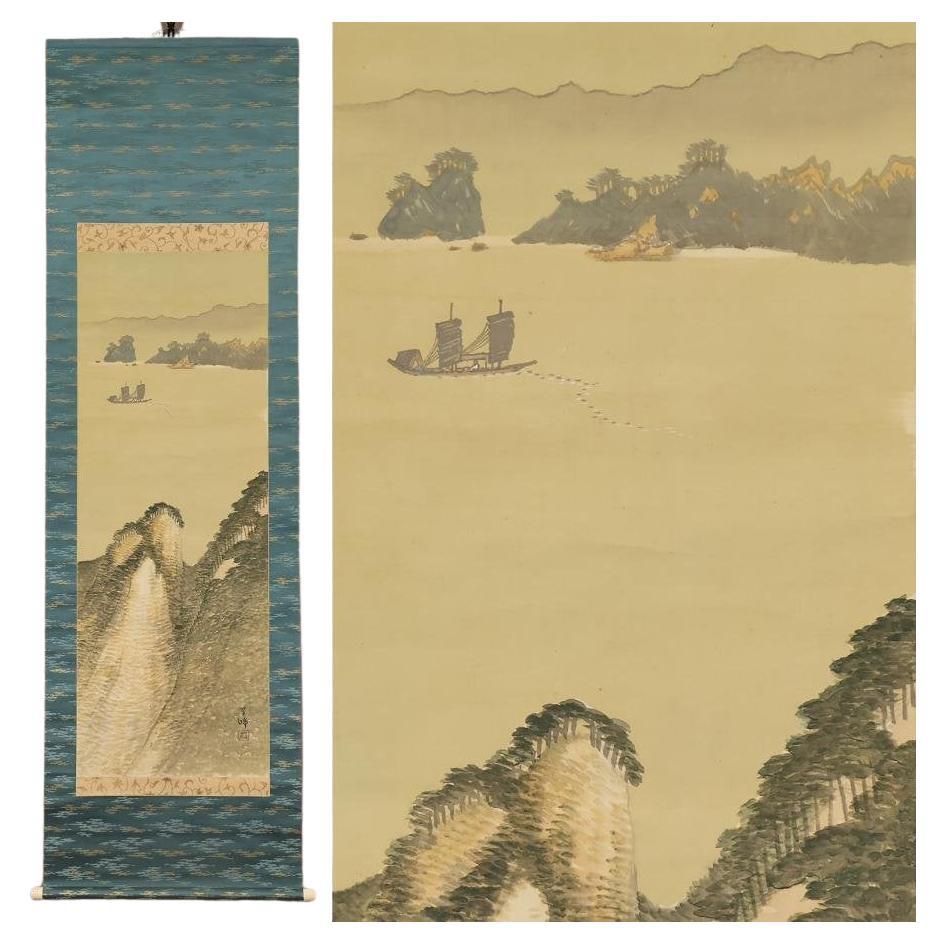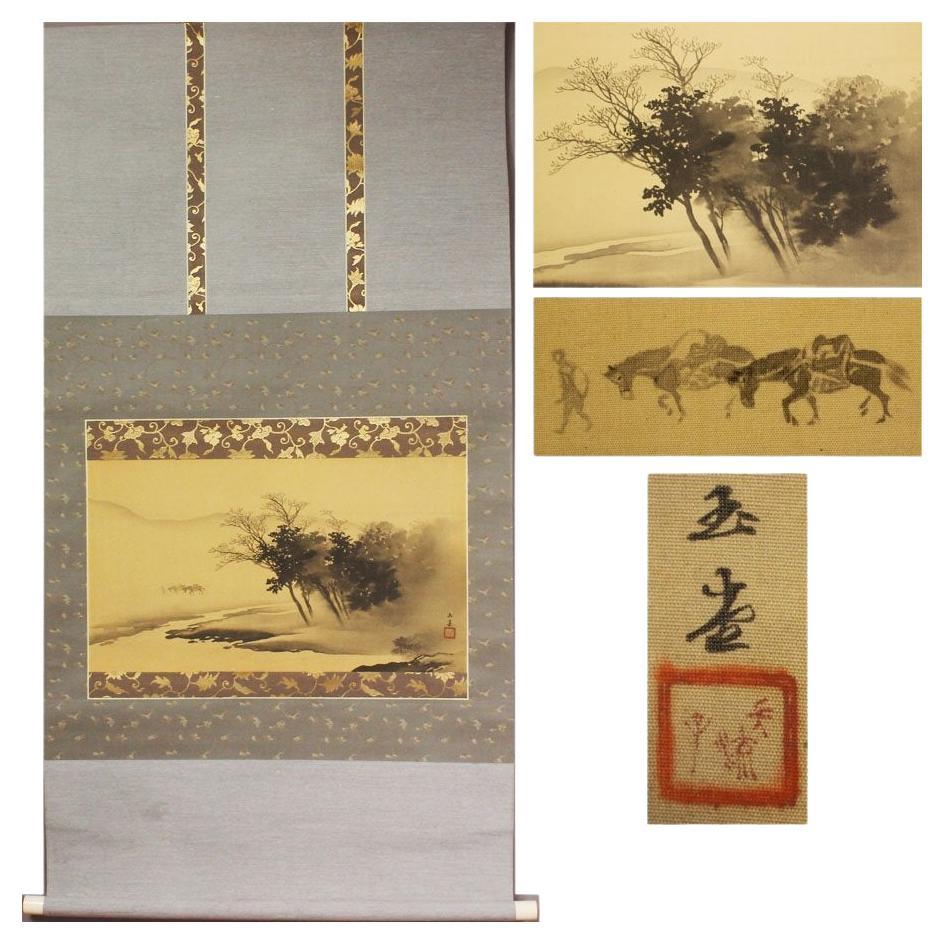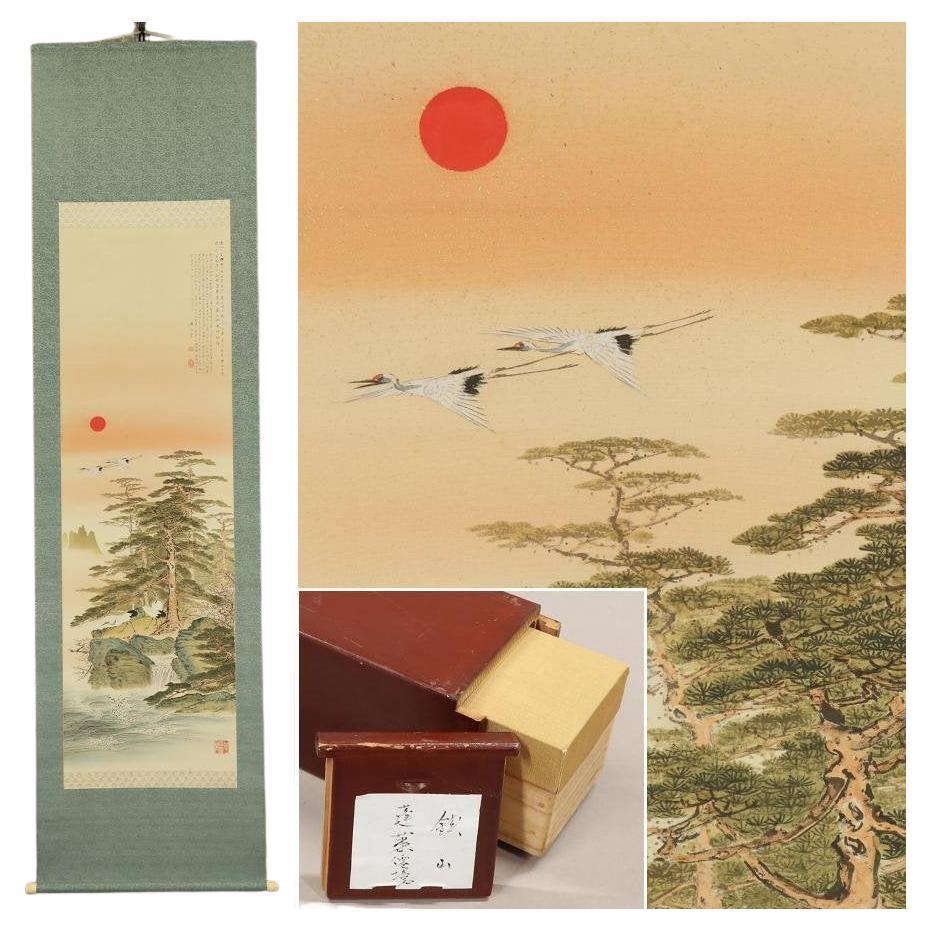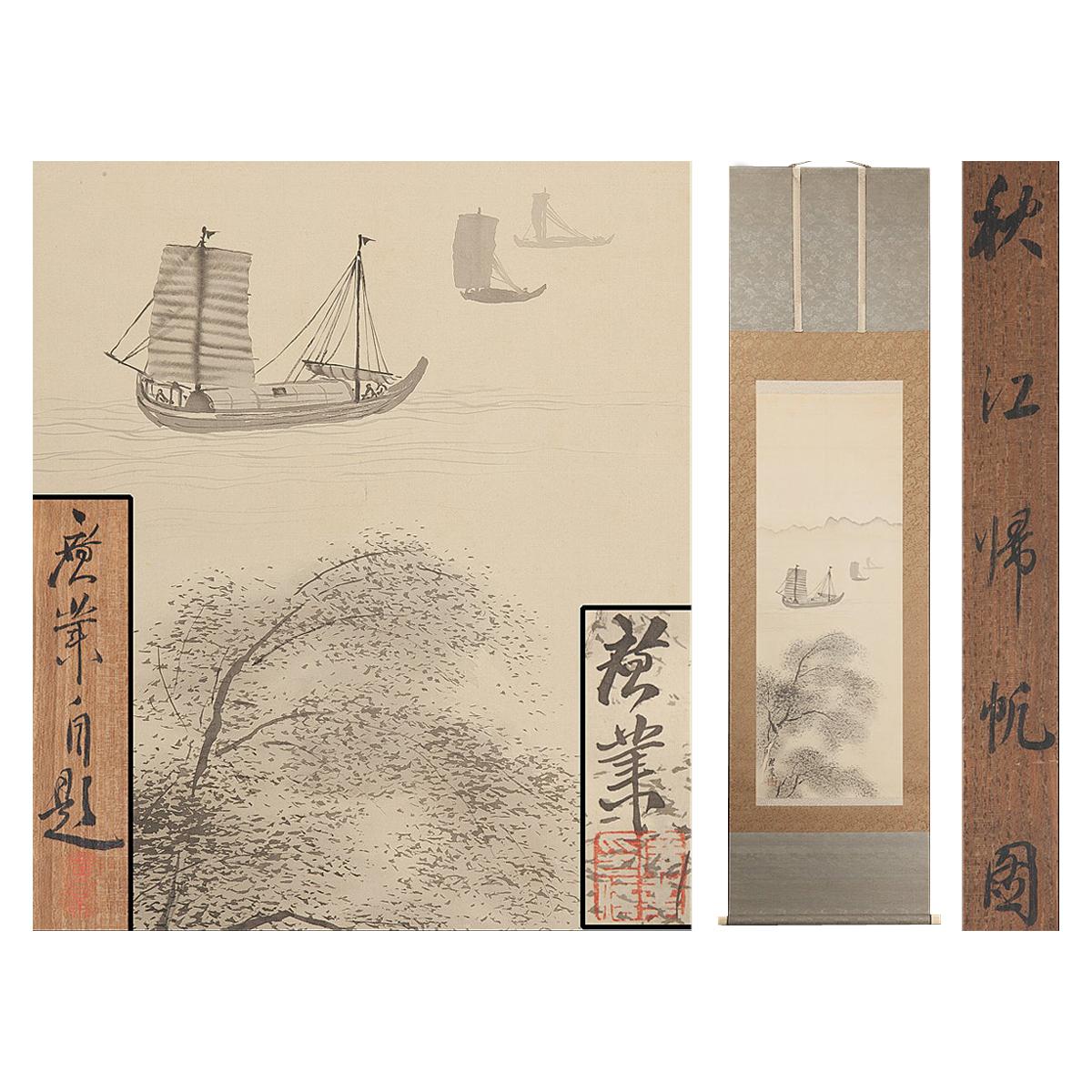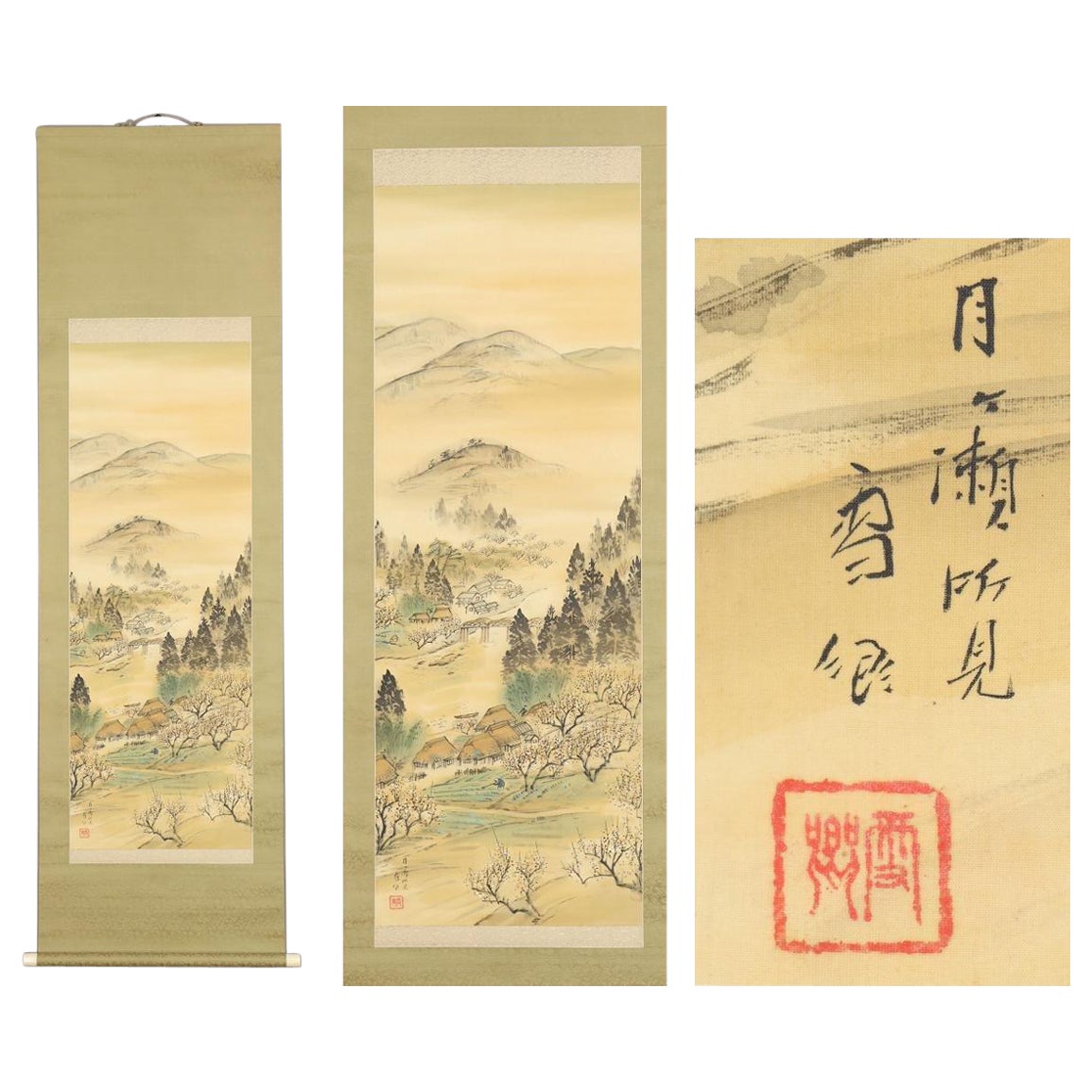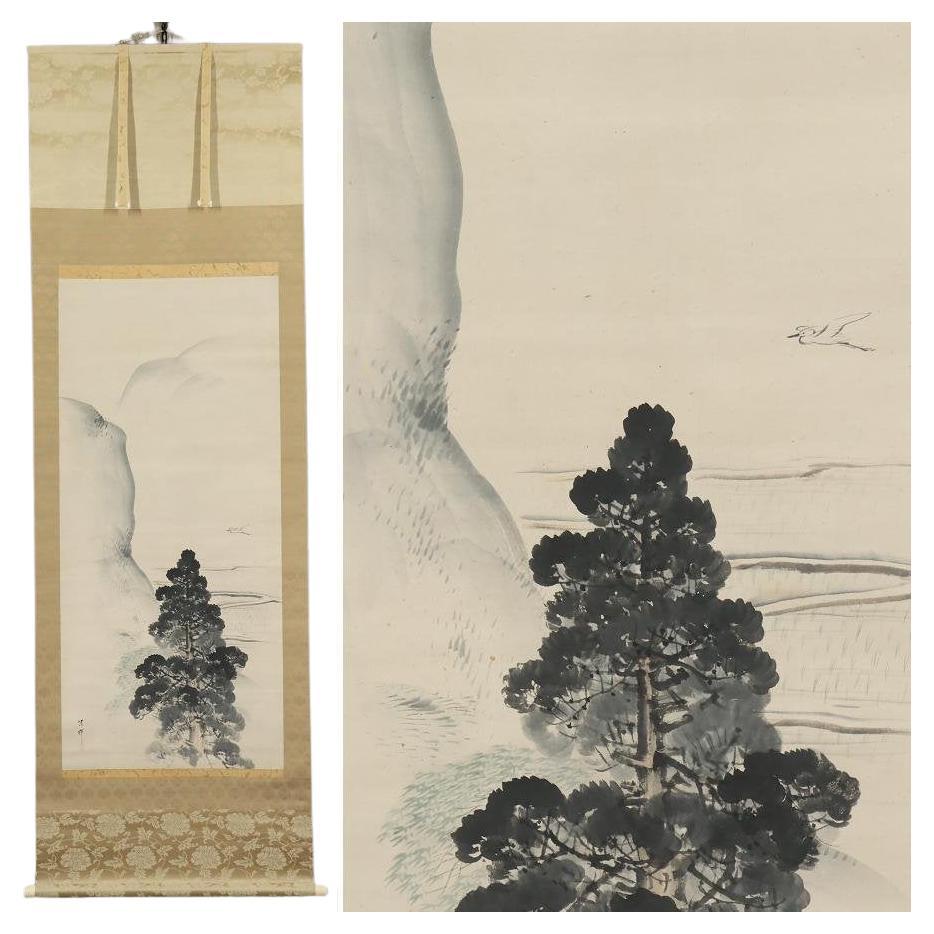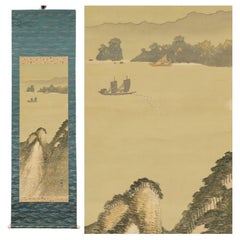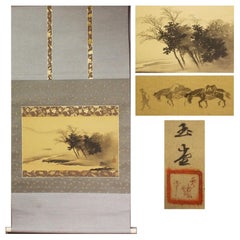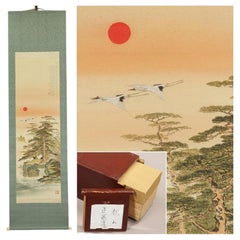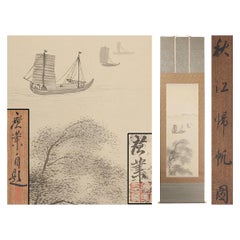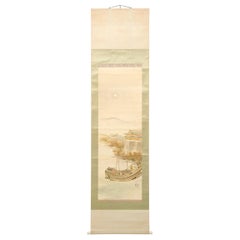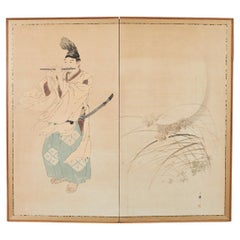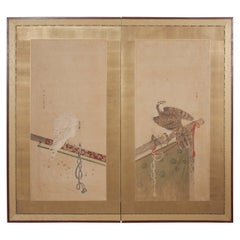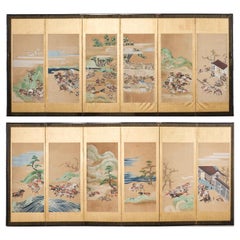Items Similar to Japanese PAinting Taisho Period Scroll Reed Cutter Nihonga Eitatsu Koyama
Want more images or videos?
Request additional images or videos from the seller
1 of 14
Japanese PAinting Taisho Period Scroll Reed Cutter Nihonga Eitatsu Koyama
$1,246.01
$1,557.5120% Off
£918.88
£1,148.6120% Off
€1,038.40
€1,29820% Off
CA$1,720.73
CA$2,150.9120% Off
A$1,888.05
A$2,360.0620% Off
CHF 988.12
CHF 1,235.1520% Off
MX$23,235.51
MX$29,044.3920% Off
NOK 12,448.80
NOK 15,56120% Off
SEK 11,660.16
SEK 14,575.2020% Off
DKK 7,908.69
DKK 9,885.8620% Off
About the Item
[Authentic work] ◆ Eitatsu Koyama ◆ Reed Cutter drawing ◆ Japanese painting ◆ Hand-painted ◆ Silk book ◆ Hanging scroll ◆
Eitatsu Koyama
1880 (Meiji 13) - 1945 (Showa 20)
[Art yearbook appraised value 950,000 yen ]
[Birthplace/Teacher lineage]
Born in Koishikawa, Tokyo Teachers: Eiaki Suzuki, Tomion Kobori
[Affiliations/Affiliations]
Member of Koujikai, Nichitsuki member, Tatsumi Gakai member, Doujin formed by Geijutsusha
[Brief history/style, etc.]
Beginning studied Western painting with Honda Nishikichiro, but then turned to Japanese painting and studied under Suzuki Eiaki, then Kobori Tomion, and worked as an illustrator for the Hochi Shimbun newspaper. In 1911, he received a commendation at the 5th Bunten Exhibition for ``Being,'' 1913 received a medal at the 7th Bunten Exhibition ``Popular Force,'' and in 1914 he received a third prize bronze medal for ``Nin''. He received a medal for the 8th exhibition ``Yagoro'' and received a medal for the 9th ``Rainami no Jin'' exhibition in 1915. Since then, he has been active in government exhibitions such as exhibiting his works at the Teiten. In addition, he was a member of Kojikai along with fellow painters (later Tatsumi In 1917, he participated in the formation of Geijutsu-sha along with Kue Machida, Gengetsu Yazawa, and others.
He gained popularity for his Yamato-e-style painting style as a master of genre paintings and warrior paintings.
The Japanese artist Koyama Eitatsu (1880-1945) was born in Tokyo. Unlike his father and grandparents, he was a child of the Meiji Period (1868-1912).
Initially, he studied Western-style art under Honda Kinkichiro (1850-1921). His generation was encouraged to learn different art techniques and styles. This notably concerns the European art scene.
However, similar to Edo artists, Koyama Eitatsu also studied the artistic styles of the schools of Tosa and Kano. Accordingly, these different thought patterns and styles blessed him.
Ukiyo-e prints of war became popular in the Meiji Period. In time, ukiyo-e would become eclipsed.
However, shin hanga (new prints) and sōsaku hanga (creative prints) managed to preserve the world of Japanese prints in the twentieth century: so a connection to the world of ukiyo-e during the Edo Period continued.
Albeit, while the modernization aspect of this did provide a fresh impetus – the broad array of subjects was decreased dramatically (murder to shunga were now a fading memory).
This work is drawn by hand and on silk.
The box is a combined box.
The paper has some small stains and wrinkles, but is generally in good condition.
There are some small stains, wrinkles, and wrinkles on the cover, but it is generally in good condition.
This is a guaranteed genuine product, so please bid accordingly.
Size:
Approximately [height 196cm x width 37cm/(main paper) 107cm x 27cm]
- Dimensions:Height: 77.17 in (196 cm)Width: 14.57 in (37 cm)Depth: 0.04 in (1 mm)
- Style:Taisho (Of the Period)
- Materials and Techniques:
- Period:
- Date of Manufacture:20th c
- Condition:Wear consistent with age and use.
- Seller Location:Amsterdam, NL
- Reference Number:Seller: 901stDibs: LU4863237100782
About the Seller
5.0
Gold Seller
Premium sellers maintaining a 4.3+ rating and 24-hour response times
Established in 2015
1stDibs seller since 2019
268 sales on 1stDibs
Typical response time: 5 hours
- ShippingRetrieving quote...Shipping from: Amsterdam, Netherlands
- Return Policy
Authenticity Guarantee
In the unlikely event there’s an issue with an item’s authenticity, contact us within 1 year for a full refund. DetailsMoney-Back Guarantee
If your item is not as described, is damaged in transit, or does not arrive, contact us within 7 days for a full refund. Details24-Hour Cancellation
You have a 24-hour grace period in which to reconsider your purchase, with no questions asked.Vetted Professional Sellers
Our world-class sellers must adhere to strict standards for service and quality, maintaining the integrity of our listings.Price-Match Guarantee
If you find that a seller listed the same item for a lower price elsewhere, we’ll match it.Trusted Global Delivery
Our best-in-class carrier network provides specialized shipping options worldwide, including custom delivery.More From This Seller
View AllJapanese Painting Taisho Period Scroll Head and Cane Nihonga Suisho Nishiyama
Located in Amsterdam, Noord Holland
[Authentic work] ◆ Suisho Nishiyama ◆ Landscape ◆ Japanese painting ◆ Kyoto ◆ Master: Seiho Takeuchi ◆ Hand-painted ◆ Silk volume ◆ Hanging scroll ◆ Suisho Nishiyama
Suisho Nishiyam...
Category
Vintage 1930s Taisho Paintings
Materials
Silk
$1,725 Sale Price
20% Off
Nihonga Japanese Painting 1900 Meiji Scroll Kawai Gyokudo Nanga School Lake Scen
Located in Amsterdam, Noord Holland
This painting by Gyokudo Kawa is named "Lakeside Night Return", portraying a serene journey home.
Gyokudo Kawai
(1873-1957)
A Japanese painter from the Meiji to Showa periods, born ...
Category
Antique 19th Century Meiji Paintings
Materials
Silk
$2,303 Sale Price
20% Off
Japanese Painting Taisho / Showa Period Scroll by Yano Tetsuzan Nanga Landscape
Located in Amsterdam, Noord Holland
[Authentic work] ◆ Tetsuzan Yano ◆ Horai Sekkaku ◆ Landscape ◆ Double box ◆ Ehime Prefecture ◆ Hand-painted ◆ Silk ◆ Hanging scroll ◆
Tetsuzan Yano [Yano Tetsuzan]
Art Yearbook app...
Category
Vintage 1930s Taisho Paintings
Materials
Silk
$2,772 Sale Price
20% Off
Scroll Painting Japanese 19th-20th Century Kōgyō Terasaki Meiji
Located in Amsterdam, Noord Holland
A fabulous landscape by Kogyo Terasaki
1866-1919
Japan painter. Akita prefecture production. Character is Tokusato, Soyama-Agaryunoki, beautiful poetry Yamabito, etc. to another is...
Category
20th Century Japanese Meiji Paintings and Screens
Materials
Bronze
$1,259 Sale Price
25% Off
Lovely Japanese Taisho Scroll Tateno Setsugo Nihonga Working the Land
Located in Amsterdam, Noord Holland
[Authentic work] ◆Setsugo Tateno◆Tsukigase Observation◆Landscape◆Japanese painting◆Takaoka City, Toyama Prefecture◆Handpainted on silk◆Hanging scroll◆
Setsugo Tateno
1890 - 1966 (...
Category
Vintage 1920s Taisho Paintings
Materials
Silk
$1,342 Sale Price
20% Off
Japanese Nihonga Painting 19th c Edo Scroll by Seiki Yokoyama Landscape Shijo
Located in Amsterdam, Noord Holland
[Authentic work] ◆ Seiki Yokoyama ◆ Landscape ◆ Rural landscape ◆ Japanese painting ◆ Shijo school ◆ Hand-painted ◆ Paperback ◆ Hanging scroll ◆
Seiki Yokoyama
[Art yearbook appra...
Category
Antique 19th Century Edo Paintings
Materials
Silk
$1,246 Sale Price
20% Off
You May Also Like
Japanese Meiji Riverside Scroll Painting, c. 1900
Located in Chicago, IL
Although western painting was initially embraced during Japan’s Meiji period (1868-1912), artists brought on a revival of traditional painting styles as they sought to create a modern Japanese style with roots in the past. This exquisite hanging scroll demonstrates the preference for soft layering of gray tones with judicious use of color. The landscape is rendered in soft ink washes that subtly distinguish between water, mountain, and sky. The scroll painting...
Category
Early 20th Century Japanese Meiji Paintings and Screens
Materials
Paper
Japanese Taisho Two Panel Screen Heian Period Flute Player
Located in Rio Vista, CA
Extraordinary Japanese Taisho period two panel byobu screen depicting Fujiwara Yasumasa playing the flute in the Ichihara Moor. Fujiwara Yasumasa (958 to 1036) was a famous Heian period...
Category
20th Century Japanese Taisho Paintings and Screens
Materials
Silk, Wood, Paper
Japanese Edo Period Two-Panel Screen
Located in Stamford, CT
A Japanese Edo Period two panel folding screen with white and brown hawks of ink and color on paper.
Category
Antique Mid-19th Century Japanese Edo Paintings and Screens
Materials
Paper
Pair of Japanese Edo/Tokugawa Screens Tale of Heiki
Located in Rio Vista, CA
Monumental pair of late 18th century Japanese Edo/Tokugawa period byobu screens depicting the battles between Taira and Minamoto. The screens have six panels each with individual sce...
Category
Antique 19th Century Japanese Edo Paintings and Screens
Materials
Brass, Gold Leaf
Japanese Silk Scroll Painting of Moneys Edo Period Mori Tetsuzan
Located in Atlanta, GA
A Japanese mounted vertical hanging scroll painting by Mori Tetsuzan (Japanese, 1775-1841) circa 19th century Edo period. The watercolor and ink on silk ...
Category
Antique 19th Century Japanese Japonisme Paintings and Screens
Materials
Silk, Paper
Two Antique Japanese Hanging Scroll Paintings
Located in Atlanta, GA
Two Japanese scroll painting depicts scenes from the Tale of Genji (Genji-E), from Edo period. These painting were purchased from Odewara Shoten in the...
Category
Antique Early 19th Century Japanese Japonisme Paintings and Screens
Materials
Brocade, Paper
$4,800 / set
